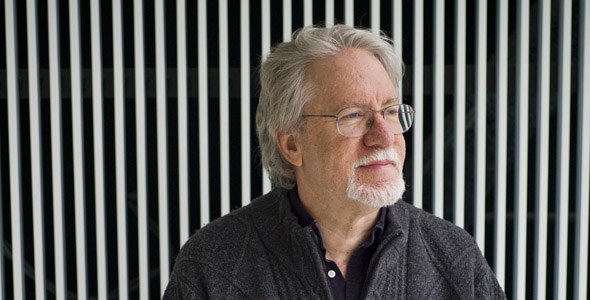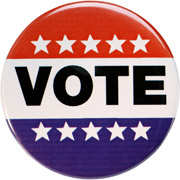ELECTION INSIGHTS 2016
Research-based perspectives from MIT
On Campaign Discourse | Edward Schiappa
John E. Burchard Chair of the Humanities and Head of Comparative Media Studies/Writing

"The U.S. has a history of unseemly bursts of crude and deceitful campaign rhetoric, beginning with outrageous slander slung between John Adams and Thomas Jefferson in 1800. Nonetheless, the sense that this year’s election rhetoric is different than usual is well founded."
— Edward Schiappa, John Burchard Chair of the Humanities and Head of Comparative Media Studies/Writing
ELECTION INSIGHTS 2016
Research-based perspectives from MIT
Question
An unusual level of overheated, coarse, and factually unfounded language has emerged in the political speech of this election cycle. To what do you attribute the rise of such language in an electoral context, and how would you compare the rhetorical styles of the two major presidential candidates? Based on your research, what is the most important perspective about the nature of U.S. political speech that would be useful for an American voter to know?
•
The U.S. has a history of unseemly bursts of crude and deceitful campaign rhetoric, beginning with outrageous slander slung between John Adams and Thomas Jefferson in 1800. Nonetheless, the sense that this year’s election rhetoric is different than usual is well founded. I surveyed a dozen of the top scholars of political rhetoric in the U.S. and almost all agreed this election cycle has witnessed outlandish political rhetoric of truly historic proportion.
One senior scholar said we would have to go back to the 1840 presidential election between Martin Van Buren and William Henry Harrison to find comparable “vacuity and fabrication.” Most agreed that Donald Trump in particular is the most outlandish and mendacious presidential candidate in a long time. Several scholars suggested the closest rival would be George Wallace in his third party campaign of 1968, and indeed, Rachel Maddow and Ed Kilgore have documented the similarities in the racist rhetoric and violence of the two campaigns’ rallies.
But as one of my scholarly colleagues noted, “on the sheer scale of his offenses, there has been no one like Trump.” As one headline reads, the “Scope of Trump's falsehoods unprecedented for a modern presidential candidate.”
Why is this happening now? Consider the following factors.
Lack of substantive reporting on policy issues
There is a meme circulating that deems the 2016 Presidential election the “worst election ever,” which strikes me as imprecise. Rather, this may be the worst covered election in modern history, with mainstream media failing us in two important ways. First, coverage of substantive policy positions of the candidates that could inform voters’ decisions has been decidedly lacking. A recent study coming out of the Shorenstein Center on Media, Politics and Public Policy notes that negative news reports about policy positions coming out of coverage of national conventions outnumbered positive reports 82% to 18%.
Importantly, the study notes that negative reports are superficial descriptions of purported controversies that fail to provide sufficient context to allow readers or viewers to make intelligent assessment of those policies or issues involved. A new Pew Research Center report, not surprisingly, indicates a majority of voters do not feel they know a lot about what the candidates’ positions are on the issues. In a different Pew study, only about a quarter of surveyed voters attributed their support for one candidate or the other as being motivated by support for their policy stances.
Profit motives have overly influenced media decision-making
Second, mainstream media has been slow to figure out how to cover Donald Trump and Hillary Clinton. In Trump’s case, his celebrity status, his coarse and insulting debate style, and his sensationalist proclamations allowed him to stand out in the crowded field of seventeen Republican primary candidates. Mainstream media allowed profits to guide coverage decisions, so it was All Trump All the Time, with the CEO of CBS gleefully noting that Trump’s extremity of speech was great for profits.
Having reaped the whirlwind, the new narrative is that the mainstream media is responsible for “normalizing” Trump’s extremism, including white supremacy, and we now see pundits wrestling with, as Nicholas Kristof recently put it, “how to cover a charlatan like Trump.” Time will tell if this course correction came too late.

"As a variety of fact-checking sources have demonstrated, no one comes close to Trump's constant rate of mendacity....Regardless of one’s personal political preferences, there is no question that Secretary Clinton’s political discourse, by contrast, has been more truthful, well reasoned, and constructive."
Old habits of sexism
Coverage of Hillary Clinton has still not escaped old habits of sexism, despite the fact that mainstream media has now had decades to get it right. Women orators in the 18th and 19th centuries faced condemnation and sometimes violence. In the 20th and 21st centuries, despite the fact that female leaders are succeeding all over the planet, women in the U.S. still face double standards that create a “heads I win, tails you lose” conundrum: act too traditionally feminine and you are seen as weak; act like a smart, articulate leader and you are branded abrasive or worse.
Scholars of rhetoric have been studying the public discourse of Hillary Clinton since she was FLOTUS, noting that she has deftly woven together elements of the so-called feminine style (personal, emotional, anecdote-driven) of rhetoric with the so-called masculine style (logical, objective, data-driven) ever since she took on the challenge of health care reform in 1993. But scholarly appreciation of her oratorical skills is not reflected in mainstream media coverage.
At least two studies, one at Harvard and the other by a social analytics firm, documented that media coverage in 2015 and the first part of 2016 was significantly more critical of Clinton than Trump. Matt Lauer’s recent, disastrous performance with Trump and Secretary Clinton demonstrates that the centuries-old history of treating women speakers more harshly than men continues.
The presidential debates have begun as I write this, and one can only hope that increased attention to the sexist coverage of Clinton can reduce the risks of repeating old mistakes. Women in competitive debate have noted the double standards, and a recent empirical study of how even facial expressions can be interpreted in a sexist manner, with the same look described “presidential” and “serious” when a male speaks, but “angry” or “bitchy” when it is a female. In Clinton's case, one sees this sort of sexism behind complaints about whether she smiles too little or too much.
The mendacity factor
Beyond the shortcomings of media coverage, what about the candidates’ political discourse itself? As a scholar and teacher of argumentation and rhetoric, I must say that I am horrified by Donald Trump’s discourse. As a variety of fact-checking sources have demonstrated, no one comes close to his constant rate of mendacity. We have reached a point where at least one news outlet is doing a weekly update on his lies and distortions (and another just came out).
One could write an essay about logical fallacies just based on examples drawn from Trump speeches, but I will limit myself to a few: Appeal to False Authority (“I know more about ISIS than the generals do”), Appeals to Force and Intimidation (a Trump tactic on Twitter, such as threatening to reveal secrets about opponents if they aren’t “careful”), Argumentum Ad Hominem (name-calling, attacking the person rather than substance, a Trump habit with too many examples to list), Argumentum Ad Ignorantium (“There’s something going on…”), Hasty or Over-Generalization (judging an entire group, like Muslims, based on too few and atypical examples), Argument of Straw (falsely claiming that Clinton would create “totally open borders”), Slippery Slope (claims that any gun control leads to abolishing the 2nd Amendment), and Equivocation (shifting his position on immigration).[1]
Regardless of one’s personal political preferences, there is no question that Secretary Clinton’s political discourse, by contrast, has been more truthful, well reasoned, and constructive. One of her speeches, “Women’s Rights are Human Rights,” was ranked 35th in a list of the top 100 speeches of the 20th century by scholars of U.S. political rhetoric. Every speech I have heard or read so far by Trump would receive an F.
Look past the pundits
As we enter the presidential debate season, the one piece of advice I would offer is to watch the debates, then turn your television off. It is inevitable that mainstream media will be asking the wrong question about the debates once they are over; namely, who “won”? They are not true debates that can be judged that way. Rather, they are more akin to a joint press conference — but they are no less valuable for being so, as they offer voters insight as to what the candidates think, and how they reason and express themselves. For any voters still undecided at this point, that is value enough.
Suggested Links
ELECTION INSIGHTS 2016
Research-based commentaries from MIT
Edward Schiappa's webpage
MIT Comparative Media Studies / Writing Program
News Archive: When logic meets rhetoric
Edward Schiappa has studied reason and rhetoric from ancient Greece to “Will & Grace.”
How to Vote in Every State.
See video with info for your state — and vote!
[1] A number of authors have catalogued Trump’s fallacies, including rhetoric scholar Jennifer Mercieca of Texas A&M University.
Photograph of Edward Schiappa by Dominick Reuter
